Sensors already equip a range of tools to enhance monitoring capacity for conservation. Some of the higher bandwidth technologies, like camera traps and acoustic monitoring systems, have been essential elements of the conservation toolkit for decades, and thus have enough users that we've created dedicated WILDLABS groups to address them. But a whole range of lower bandwidth sensors beyond these core technologies are being increasingly integrated into conservation monitoring systems, and offer rich new insights into the wildlife and ecosystems we're all working to protect. As with many technologies, cost and access have historically been challenges to the adoption of new sensors, but with low-cost and open-source solutions on the rise, we're excited to see what the future of this space holds.
Getting Started with Sensors:
- Watch Shah Selbe's Tech Tutors episode on scaling FieldKit, an open-source conservation sensor toolbox, from a project to a successful conservation tech product.
- Check out our Virtual Meetup about Low-Cost, Open-Source Solutions in conservation tech, including a talk by Alasdair Davies on the Arribada Initiative's work with thermal sensors in early warning systems.
- For a more in-depth introduction, watch the first video in our datalogger mini-series: Freaklabs: How do I get started with Arduino?
In this group, you'll meet others who are using and innovating diverse sensors in their work, discuss ways to make sensors more effective & accessible for conservationists, learn about what sensors are already helping us accomplish in the field, and have the opportunity to ask and answer questions. Join this group to get started!
Header image: Emma Vogel, University of Tromsø
No showcases have been added to this group yet.
Botswana Predator Conservation Trust



- 0 Resources
- 85 Discussions
- 10 Groups
I work in conservation on integrating the technology out there for custom solutions for partners.
- 0 Resources
- 0 Discussions
- 22 Groups
- @adanger24
- | She/Her
Arribada Initiative
Senior Project Manager and Field Specialist


- 2 Resources
- 16 Discussions
- 10 Groups
- @pmarchetto
- | he/him
University of Minnesota
http://about.me/pete.marchetto
- 1 Resources
- 0 Discussions
- 3 Groups
National Geographic Society
Experience utilizing technology to inspire, educate, and create solutions to some of our biggest challenges. Currently, head of the National Geographic Society Exploration Technology Lab, overseeing the development and deployment of research and storytelling technologies.
- 0 Resources
- 1 Discussions
- 16 Groups
- @AthenaRycyk
- | she/her
- 0 Resources
- 0 Discussions
- 8 Groups
- @SamuelHertz
- | He/Him/His
I'm a PhD researcher at Royal Holloway University of London (Centre for GeoHumanities) researching modalities of sound-sensing technologies across climate and conservation sciences. Interested in ethics and histories of acoustic monitoring as well as new visualization methods.
- 0 Resources
- 3 Discussions
- 10 Groups
- 0 Resources
- 0 Discussions
- 4 Groups
- @rohikip
- | He/His/Him
A Techie with passion in biodiversity conservation.
- 0 Resources
- 0 Discussions
- 5 Groups
MSc Engineering / IoT Engineer / Nature Enthusiast
- 0 Resources
- 0 Discussions
- 8 Groups
Movement Ecologist studying the where, why, and how animals move throughout our world. Current work is investigating the movement and energetics of large neotropical bats in a changing environment with ephemeral resources.



- 0 Resources
- 23 Discussions
- 22 Groups
- @matt_hron
- | He/Him
Wildlife Protection Solutions (WPS)
Product Manager at Wildlife Protection Solutions



- 0 Resources
- 8 Discussions
- 8 Groups
Welcome to our new Conservation Tech Showcase, a series highlighting innovative and impactful projects from outstanding organizations around the world.
11 May 2023
The Zoological Society of London, with the support of WILDLABS and the UK Space Agency, are proud to publish this new guide to satellite technologies for tracking wildlife.
17 February 2023
A pilot program in Oregon’s Willamette Valley will test how well artificial intelligence-enabled sensors can identify and characterize wildfires, which will help with responder resource allocation and boost community...
15 February 2023
Technology to End the Sixth Mass Extinction. Salary: $104k-144K; Location: Washington DC or Seattle WA, potential hybrid; 5+ years of Full stack development experience; Deadline March 15th - view post for full job...
10 February 2023
Frontiers in Conservation Science is calling for submissions for a Research Topic that aims at examining the paradoxical relationship that has been established in recent years between the flagships of new technology...
10 February 2023
Are you excited by the potential for new technologies to help monitor the natural world? Do you enjoy communicating your passion for technology and nature with diverse audiences? We are seeking an enthusiastic...
2 February 2023
Consultancy opportunity at ZSL for an experienced monitoring specialist to support species monitoring in rewilding landscapes across Europe
31 January 2023
Sending real-time alerts from ecological sensors such as camera traps in areas with poor data connectivity is complex and involves integrating a large number of potentially complex hardware and software components. Our...
13 January 2023
The authors "tested the use of a thermal imager to assess the occupancy of enclosed nests, using nest-box populations of small passerines. Based on a thermal image of each nest box, observers were able to predict nest-...
13 January 2023
WILDLABS and Fauna & Flora International are seeking an early career Vietnamese conservationist for 12-month paid internship position to grow and support the Southeast Asia regional community in our global...
11 January 2023
As the FieldKit hardware ecosystem grows, Conservify is seeking a Junior Electrical Engineer to assist with testing, troubleshooting, prototype development, and developing production test fixtures for our growing...
9 December 2022
August 2025
event
September 2025
event
March 2026
December 2023
event
November 2023
event
17 Products
Recently updated products
121 Products
3 R&D Projects
84 Organisations
Recently updated products
Recently updated R&D Projects
Recently updated organisations
| Description | Activity | Replies | Groups | Updated |
|---|---|---|---|---|
| So, updated the text a bit with images cropped at 100% zoom :) we are already happy with the time reductions we got, but... would like to get at least 90% time reduction instead... |
|
Data management and processing tools, Latin America Community, Sensors | 8 months ago | |
| Thanks! The Teensys are nice for processing power if choosing an external Lora board I’d say that’s a good choice. I started with teensies, there was a well supported code base... |
|
Camera Traps, Sensors | 8 months 1 week ago | |
| There's quite a few diy or prototype solutions described online and in literature - but it seems none of these have made it to market yet as generally available fully usable... |
|
AI for Conservation, Camera Traps, Human-Wildlife Coexistence, Sensors | 8 months 3 weeks ago | |
| The PCB mount terminals are actually quite robust and paired with a lock washer and something that would better secure the nylon (e.g., a piece of flat grooved plastic to add... |
|
Acoustics, Conservation Dogs, Sensors | 9 months ago | |
| No problem at all Yu (@JY) and good luck with your studies! Happy to discuss this and any other ideas any time.All the best,Rob |
+10
|
Sensors, Animal Movement, Connectivity, Drones, Open Source Solutions, Emerging Tech | 9 months 2 weeks ago | |
| @cmwainaina please take a look |
|
Animal Movement, AI for Conservation, Camera Traps, Connectivity, Data management and processing tools, East Africa Community, Emerging Tech, Ethics of Conservation Tech, Human-Wildlife Coexistence, Marine Conservation, Protected Area Management Tools, Geospatial, Sensors, Software Development | 1 year ago | |
| A community device isn’t just about the technology; it’s also about creating a collaborative community. Shout out to all innovators... |
|
Animal Movement, Marine Conservation, Open Source Solutions, Sensors | 1 year 1 month ago | |
| Hi Steph, We appreciate the support! Thanks for the tag and your help managing the community!Patrick |
|
Sensors, Acoustics, Conservation Dogs, Emerging Tech, Open Source Solutions | 1 year 3 months ago | |
| Congratulations! My first hydromoth was just arrived yesterday and so excited! Looking forward for the update from your project!!! |
|
Acoustics, Animal Movement, Climate Change, Conservation Tech Training and Education, Data management and processing tools, Emerging Tech, Open Source Solutions, Protected Area Management Tools, Sensors, Software Development, Latin America Community | 1 year 3 months ago | |
| Hi everyone, @craig joined last month's Variety Hour to chat about Tagranger, which you can read more about here. A TagRanger®... |
|
Animal Movement, Connectivity, Sensors | 1 year 3 months ago | |
| 'Most importantly, we have to make it play a MIDI version of the DoctorWho theme song when you arm the device. That has to be the #1 feature if you ask me!' Seconded! |
+9
|
Acoustics, Animal Movement, Emerging Tech, Open Source Solutions, Sensors | 1 year 4 months ago | |
| Sounds good. Just sent you a private message. |
|
Climate Change, Conservation Tech Training and Education, Sensors | 1 year 4 months ago |
HWC Tech Challenge Winners Announced
1 November 2017 12:00am
HWC Tech Challenge Update: Meet the Judges
20 October 2017 12:00am
Download New Conservation Tech Guidelines: Camera Traps, Acoustics and LiDAR
11 October 2017 12:00am
Kids, Drones & Science At The Water’s Edge
4 October 2017 12:00am
Saliva-powered paper battery
26 September 2017 2:55pm
DAS: A Scaleable Solution For Protected Area Management
26 September 2017 12:00am
How to lose a BRUV in 10 days
26 September 2017 12:00am
Elephant's Banquet
19 September 2017 12:00am
IoT breakthrough - applications for wildlife conservation?
15 September 2017 3:10pm
Thermal cameras and wildlife
26 July 2017 6:51pm
21 August 2017 12:17pm
Abstract here from the IMC Congress in Perth, they found the higher-res versions are much better than the less expensive (e.g. iphone) versions when it comes to finding animals.
Now you see me: How thermal imaging increases detection of cryptic nocturnal mammals in tropical regions
Avril Underwood1 , Mia Dehre-Miller2 1. James Cook University, Smithfield, Queensland, Australia 2.
University of Lancaster, Lancaster, United Kingdom Accurate measures of species abundance and distribution underpin effective wildlife management and conservation strategies. Obtaining these data is very challenging when researching the cryptic nocturnal arboreal mammals of in the dense forest of the Wet Tropics. Our research shows that using a hand-held thermal imager significantly increases the detection rate of all mid-sized arboreal mammals when compared to the most commonly used method of spotlighting. We determine the optimal environmental and mechanical parameters for thermal imaging, and we investigate ‘cost-versus-result’ of hand-held imaging devices currently available on the market. We suggest that hand-held thermal imaging is a great emerging technology for cryptic arboreal mammal detection across tropical forested regions and beyond.
21 August 2017 12:20pm
My own experience is with the FLIR iphone attachment, just informal testing, but hasn't been that great at finding animals. I also think it would work better in the early AM. In the evening there can still be a lot of rocks and trees still warm from the sun.
Funding Opportunity: Leverage space technology for wildlife protection
6 July 2017 12:56pm
Leverage Space Technology for Wildlife Protection with the European Space Agency Kick-start Grant
5 July 2017 12:00am
Trialing Audiomoth to detect the hidden threats under the canopies of Belize
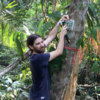 Andrew Hill
and 1 more
Andrew Hill
and 1 more
27 June 2017 12:00am
Biomaker Challenge - up to £1000 support for prototyping sensors and instrumentation related to biology
19 June 2017 3:46pm
19 June 2017 3:51pm
Hey Jenny,
Thanks for sharing this, looks really interesting! In addition to WILDLABS members potentially getting involved, it'd be great to hear about some of the projects that get developed through the challenge. It looks like they're all going to be shared openly on github! Perhaps you could highlight or direct folks here to any as they emerge that you think might be particularly relevant?
Steph
19 June 2017 4:03pm
Hi Steph
Sure - we'll have the projects confirmed by 30 June and I can highlight ones that might be of interest!
Jenny
From the Field: Eric Becker and designing sensors for wildlife
22 May 2017 12:00am
acoustics for Human-Wildlife Conflict Prevention, Anti-poaching, and more
27 April 2017 6:43pm
From the Field: Dr Raman Sukumar and Technology Developments Needed to Conserve Elephants
5 April 2017 12:00am
Lasers in the Jungle Somewhere: How Airborne LiDAR Reveals the Structure of Forests
 Phil Wilkes
Phil Wilkes
4 April 2017 12:00am
Heat Maps
2 March 2016 3:18pm
31 March 2017 10:45am
Hi @AdamBloch
I'd like to know more about your setup. I'm monitoring temperatures on a nature reserve using an array of 100 iButton Thermocron temperature sensors. I'm interested in what the benefits of using Arduino and Raspberry Pi might be. I need to collect my sensors in and read through a USB device. Then there's the interpolation and plotting of the data, and I'm particularly interested in how you are filtering and querying your data i.e. 'selectable [time?] range'.
Thanks
31 March 2017 9:49pm
Hi Thomas
We are mapping a very small area in real time. The data rate is controlled by the time it take to read all the DS18B20s. The logger I use in the Octogons is using about 90 sensors and refreshes about every 5 to 15 seconds. The data is store as a CSV in series of files.
Best thing to do is drop me a PM and your number.
Many thanks
Adam
15 Risks and Opportunities for Global Conservation
31 March 2017 12:00am
From the Field: Paul Millhouser and tracking migrating kestrels with low cost, light based geolocators
29 March 2017 12:00am
The Noise Egg: Testing the Effects of Underwater Noise on Aquatic Animals
27 March 2017 12:00am
From the Field: María José Bolgeri and tech to alleviate Puma-Human conflict
22 March 2017 12:00am
Photogrammetry: mapping caves and other environments
19 January 2017 11:46am
8 March 2017 1:49pm
Hi Ollie,
You can do the photogrammetry without a drone. You just need a tripod and a camera. The drone is useful because it can move to locations automatically ensuring that you have correct overlap but in caves you obviously will not have the GPS signal you need for most off the shelf units to navigate.
Thom mentioned to me a device called a Zebedee, which should do what you are hoping for. I don't know anyone who has one though and I'm afraid I don't have a LiDAR unit to lend.
Tom
8 March 2017 1:54pm
A colleague showed me this last week - laser scanning in Nottingham's 'caves' - scroll down and check out the video.
http://tparchaeology.co.uk/caves/caveswebsite/index.htm
8 March 2017 2:03pm
For good measure, here's some cave survey porn of Hang Son Doong cave in China.
https://www.youtube.com/watch?v=tOH4gbW18Ts
#Tech4Wildlife Photo Challenge: Our favourites from 2016
1 March 2017 12:00am
A hive of activity – CAD designers are crafting an open future for bees
20 December 2016 12:00am
Conservation Leadership Programme 2017 Award
21 November 2016 12:00am
5 Smart Technologies That Will Crack Down On Wildlife Trafficking
14 November 2016 12:00am
Neotropical Migratory Bird Conservation Act grants via USFWS
8 November 2016 12:00am
How do Wildlife Crime Experts view Remote Sensing Technologies used to Combat Illegal Wildlife Crime?
7 November 2016 12:00am


















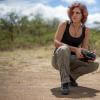
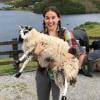


















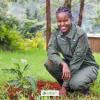















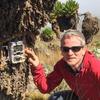

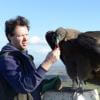




26 July 2017 8:33pm
Oh, cool! It'd be interesting seeing if it could be used for tracking as well. I've used some handheld cameras and looked at footprints, but those disappeared pretty quickly.